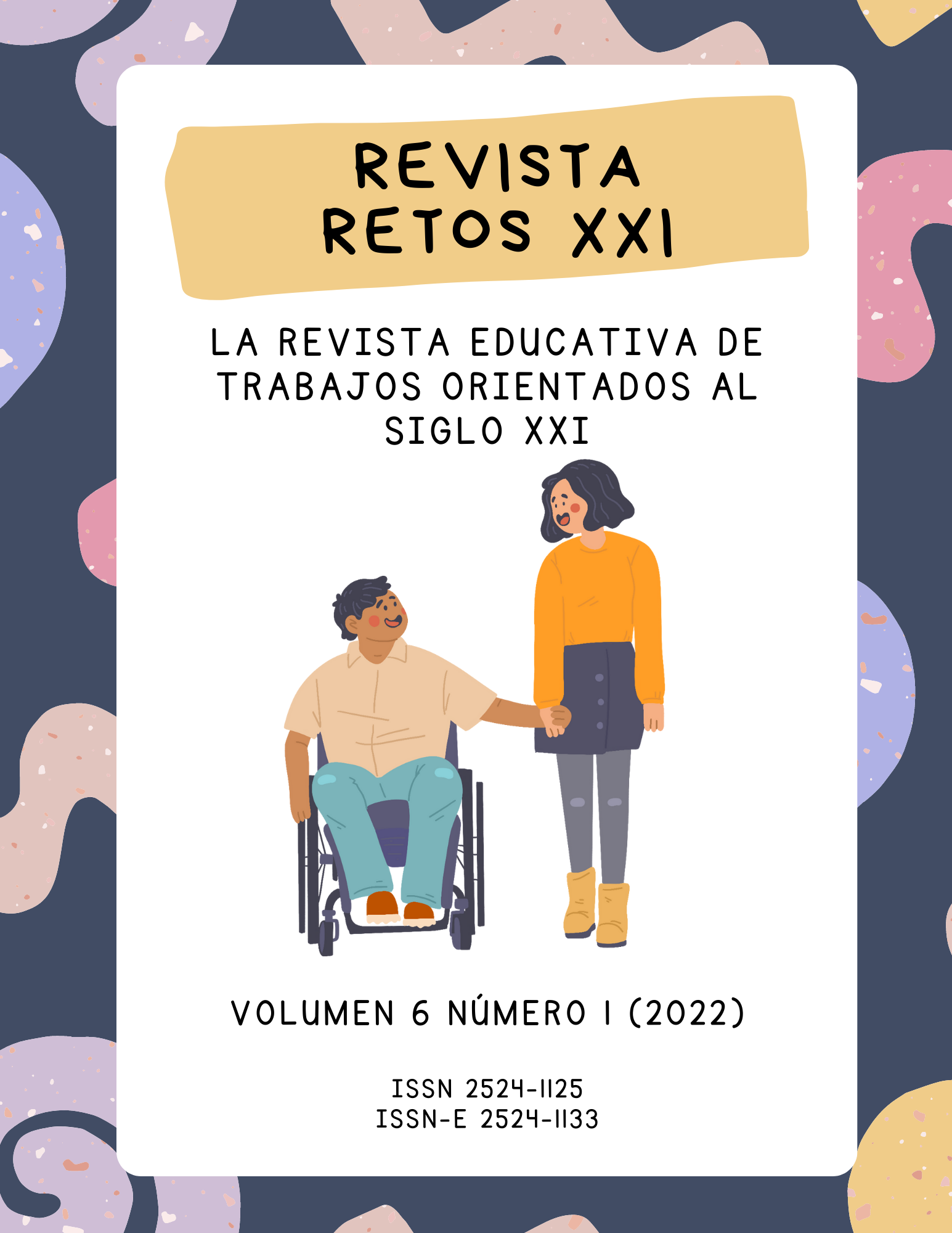Las emociones, la genética y la neurociencia en la atención educativa a la diversidad
DOI:
https://doi.org/10.30827/retosxxi.v6i1.25335Keywords:
emotion, genetic, neuroscienceAbstract
The following monograph aims to determine the relationship between genetics, neuroscience and emotions and their importance in educational attention to diversity. Only a few decades ago the scientific community has not begun to take seriously the importance of emotions in the processes of reason, and their repercussions, in all areas of human life. In this sense, the question consists not only in informing about the need to know how emotions work in the body-mind unit of the human organism and in the interaction with the environment, but also in assuming educational responsibility in this regard. There is no mental function without a brain and a social context, so emotions are the product of the organism encoded by its genome in adaptation to social experience.
Downloads
References
Anthony, E.J. (1998). The response of overwhelming stress in children. En Anthony y Chiland C. The child in his family. John Wiley and Sons.
Augusto, J. M., Aguilar, Mª. C. y Salguero, Mª. F. (2008). El papel de la IEP y del ptimismo/Pesimismo disposicional: En la resolución de problemas sociales: un estudio con alumnos de trabajo social. Electronic Journal of Educational Psychology, 6(2), 363-382.
Boulle, F., Van Den Hove, D. L. A., Ja R. (2012). Epigenetic regulation of the BDNF gene: implications
for psychiatric disorders. Molecular Psychiatry.
Belmonte, C. (2007). Emociones y cerebro. Real Academia de las Ciencias Exactas, Física y Naturales. Instituto de Neurociencias, 101(1), 59-68.
Cohen, J. (2003a). La inteligencia emocional en el aula. Proyectos, estrategias e ideas. Editorial Troquel.
Cohen, J. (2003b). La inteligencia emocional en el aula. Proyectos, estrategias e ideas. Editorial Troquel.
Conde, I. L. y Santos P. M. (2015). Implicaciones de los mecanismos epigenéticos en el desarrollo y tratamiento de los trastornos de la personalidad. Citas Españolas de psiquiatría, 43(2), 42-50.
Davidson R. J., Jackson D. C., Kalin N. H. (2002). Emotion, plasticity, context, and regulation: perspectives from affective neuroscience. Psycho Bull, 126(6), 890-909.
Ehlert. V. (2013) Enduring psychological effects of childhood adversity, Psychoneurorndocrinology.
(9).
Gelder, B., Morris, J. S. y Dolan, R. J. (2005). Unconscious fear influences emotional awareness of faces and voices. Proceeding of the National Academy of Sciences of United States of America, 102(51), 18682-18687.
Kandel. E. (2000). Principles of Neural Science. McGraw-Hill Professional Pub.
Loreman, T., Deppeler, J. y Harvey, D. (2005). Inclusive Education. A practical guide to supporting
diversity in the classroom. Allen &Unwin.
López-Lassá, E. (2007). Educación emocional. Programa para 3-6 años. Wolters Kluwer.
Navarro, E.C. (2013). El lenguaje no verbal un proceso cognitivo superior indispensable para el
ser humano. Revista comunicación, 46-51.
Núñez, L., Bisquerra, R., González, J. y Gutiérrez, Mª. C. (2006). El papel de la institución educativa
en la educación emocional. En J. M. Asensio, J. García Carrasco, L. Núñez Cubero y J. Larrosa (Coords.). La vida emocional. Las emociones y la formación de la identidad humana. Ariel.
Rodríguez, A. (2017). Editorial. Caminando con sentido hacia la inclusión educativa mundial, RETOS XXI, 1, 9-15. http://revistas.utp.ac.pa/index.php/retoxxi/article/view/1516
Rosenzweig, M. R. y Leiman, A. L. (1996). Psicología fisiológica. Mc Graw Hill.
Salgueo, M. L, y Panduro, A. (2001). Emociones y genes. Investigación en Salud, 3(99), 35-40.
Sanz, M. M. (2015). Epigenética y trastornos psiquiátricos. Pediatría Integral. 524-531.
Sealfon, S. C., Olanow, C. W. (2000). Dopamine receptors; from structure to behavior. Trends
Neuroscience, 23(10), 34-40.
Shepherd, G. M. (1994). Neurobiology. 3ª edition. Oxford University Press.
Vander, A. J., Sherman J. H. y Luciano, D. S. (1997). Human physiology. McGraw-Hill Book Company
Zavala, M. A., Valdez, M. D. y Vargas, M. C. (2008). Inteligencia emocional y habilidades sociales en adolescentes con alta aceptación social. Electronic Journal of Educational Psychology, 15, 319-338.
Published
Versions
- 2023-04-20 (2)
- 2022-11-05 (1)
How to Cite
Issue
Section
License
Copyright (c) 2022 The Educational Journal of Works Aimed at the XXI century (XXI CHALLENGES)

This work is licensed under a Creative Commons Attribution-NonCommercial-ShareAlike 4.0 International License.












